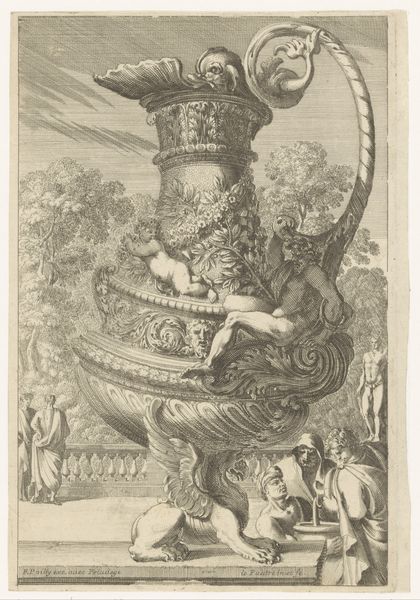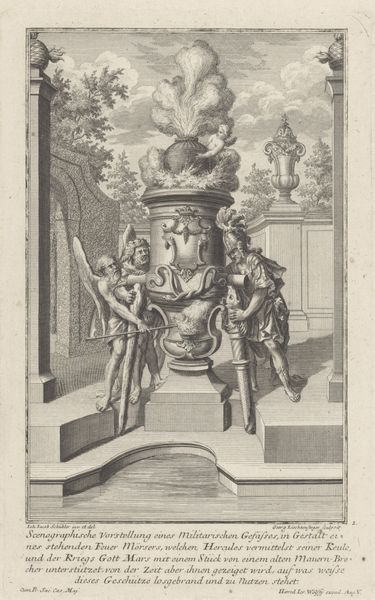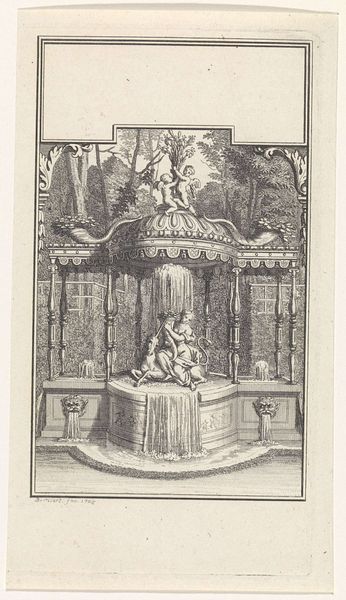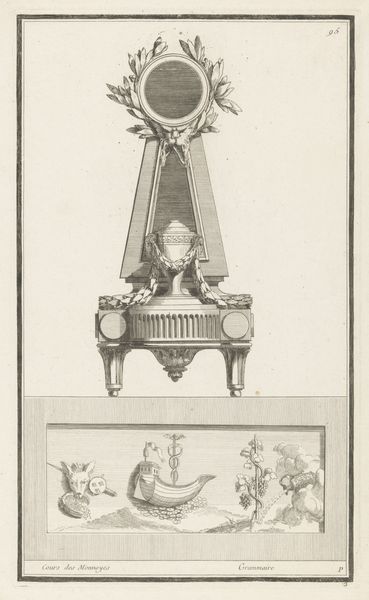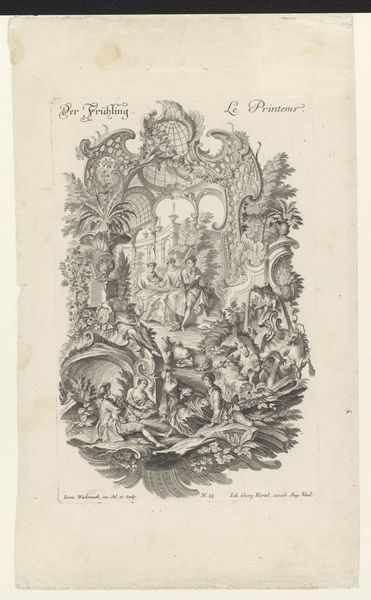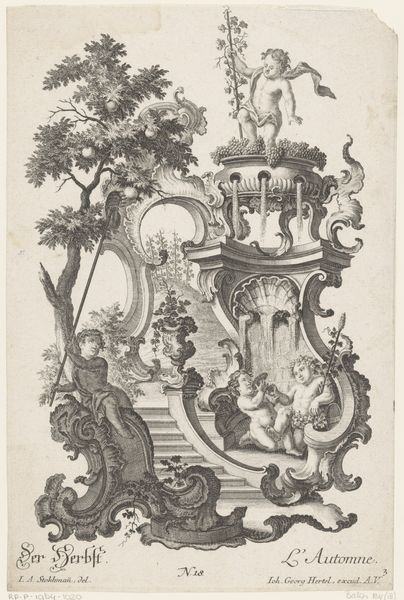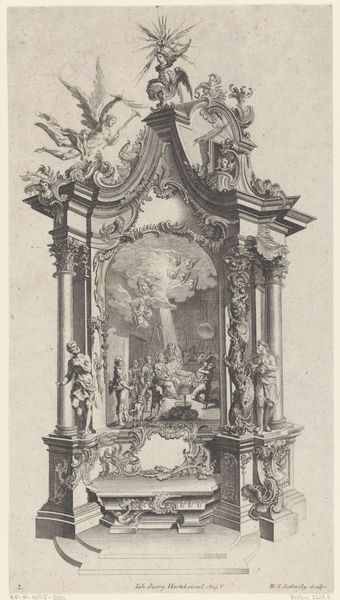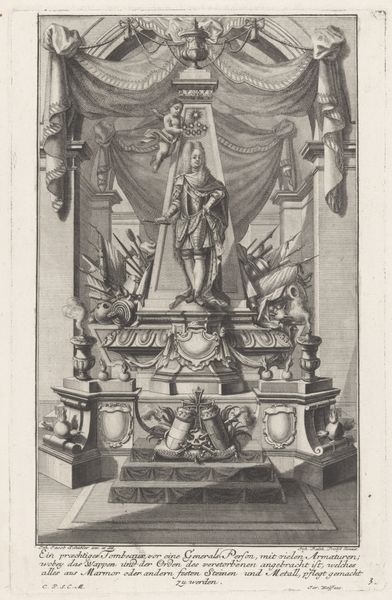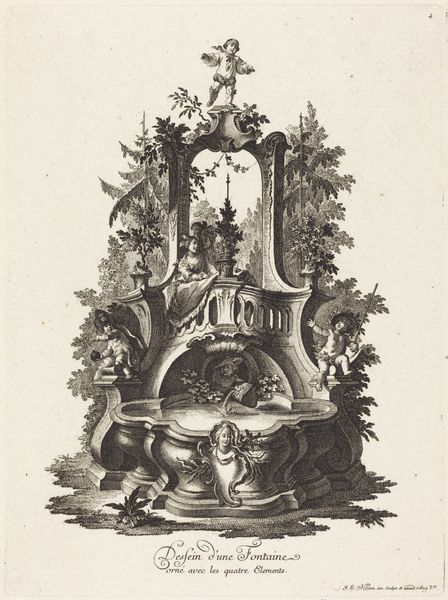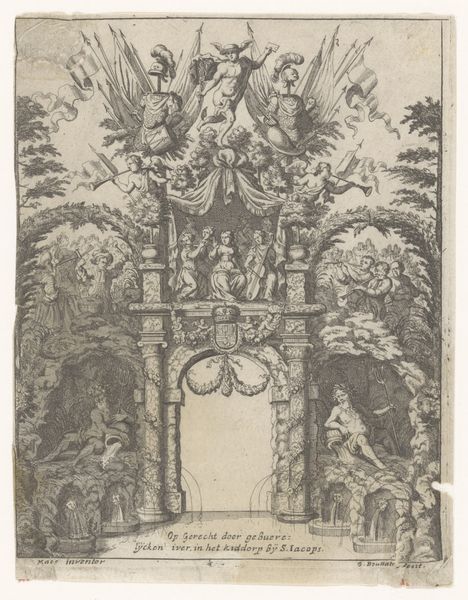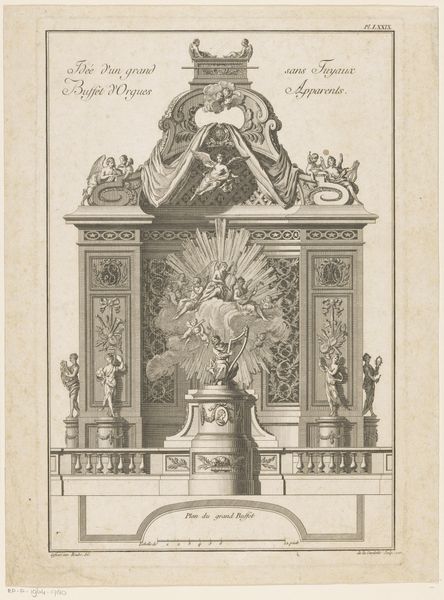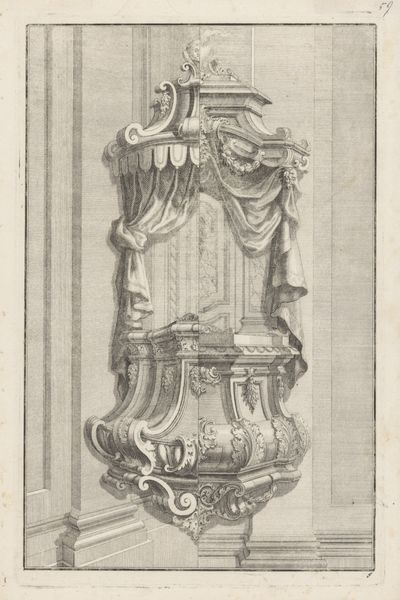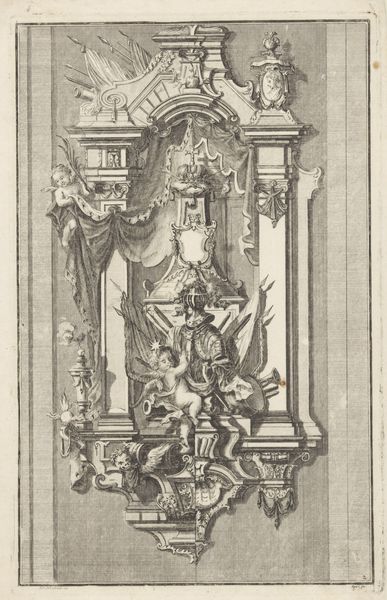
print, engraving
#
baroque
# print
#
old engraving style
#
landscape
#
figuration
#
line
#
history-painting
#
engraving
Dimensions: height 262 mm, width 183 mm
Copyright: Rijks Museum: Open Domain
Curator: Let's discuss this intriguing print titled "Fountain with Woman", created by Sébastien Leclerc I before 1664. It’s currently held in the Rijksmuseum collection. My immediate impression is that there is a distinct theatricality here, particularly regarding the figures and their placement around this baroque fountain. Editor: Indeed, the scene seems meticulously staged. As a materialist, what strikes me is the engraving technique itself, the labor involved in creating such detail with lines alone, replicating not only the figures but the textures of stone, water, and foliage. The use of line creates a clear vision into a classist ideal with use of ornamentation Curator: Absolutely. Looking closer, we see the woman at the fountain's center, flanked by a cupid figure. Framing them both, as well as in the scene along the fountains base, are vignettes hinting towards a larger socio-political history; it feels connected to the court culture of the period. The landscape teems with characters in various situations of peril. Editor: Note how the etching process enables mass reproduction. Leclerc isn't just presenting a singular, precious object but a replicated image intended for wider circulation. Think of it as a piece that's been "tooled", both a material object and a vessel carrying specific social ideas. This accessibility transforms this image in terms of reception. Curator: And isn’t it interesting that even with the widespread potential the artwork remained locked to elitist circles for such a long period. Considering, though, who the beneficiaries of the labour were. We can reflect here too upon issues of gender, and consider the implications that may inform its legacy of representation to a patriarchal lens in this medium of landscape scenes? Editor: Absolutely, but we must look closely at those representations, at how materials reflect access and determine who could engage. Even engravings, though more accessible than painting, presupposed a level of literacy, and an audience invested in the stories being depicted. So much history comes from class lines. Curator: True. Even from such a comparatively small image—especially given that it captures an understanding of cultural power –we can begin to interrogate assumptions and power dynamics embedded in Leclerc’s landscape printmaking. It's really about peeling back these visual layers. Editor: Yes, looking beyond the immediate appeal and examining both the materiality of its production and the socio-economic implications that shaped its accessibility.
Comments
No comments
Be the first to comment and join the conversation on the ultimate creative platform.
